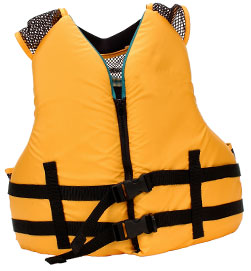Here’s What You Need to Know about Canoe Safety
07 May 2016
Our provincially accredited Safe Canoe training program is a smart way for recreational lake water canoeists to learn how to paddle with confidence and know how to prepare for a safe and enjoyable canoeing adventure.
It is a tragic and regrettable annual occurrence: a stricken canoeist goes missing or drowns in one of Ontario’s lakes or rivers.
 According to research by the Lifesaving Society – a national nonprofit dedicated to preventing drowning and promoting aquatic safety – between 2007 and 2011, 836 people drowned in Ontario. Of those unfortunate deaths, most occurred in natural bodies of water (69%) between May and September (64%), and on a weekend (51%). Furthermore, boating incidents comprised the second-largest number of aquatic fatalities. While drowning deaths affiliated with powerboat use were more prevalent (63%), the percentage of fatalities associated with canoeing was also notable (20%). Most alarmingly, 95% of these deaths were attributed to the fact the victims were not wearing a lifejacket or a PFD (personal floatation device).
According to research by the Lifesaving Society – a national nonprofit dedicated to preventing drowning and promoting aquatic safety – between 2007 and 2011, 836 people drowned in Ontario. Of those unfortunate deaths, most occurred in natural bodies of water (69%) between May and September (64%), and on a weekend (51%). Furthermore, boating incidents comprised the second-largest number of aquatic fatalities. While drowning deaths affiliated with powerboat use were more prevalent (63%), the percentage of fatalities associated with canoeing was also notable (20%). Most alarmingly, 95% of these deaths were attributed to the fact the victims were not wearing a lifejacket or a PFD (personal floatation device).
Don’t let this happen to you or someone you love.
Five Essential Things to Do and Know Before Leaving Shore
Before you embark on your next paddling adventure, we recommend you keep these basic safety tips top-of-mind:
- Always wear a lifejacket. There is no rational argument for boating, kayaking, canoeing, or fishing on the open water without wearing a lifejacket or Personal Floatation Device (PFD). Don’t run the risk of drowning. Put one on and keep it on while you’re on the water.
- Beware of cold-water shock. A sudden and unexpected immersion into water that’s 15 degrees Celsius or less can result in cold-water shock in about one minute. Cold-water shock is often cited as the most common cause of death from immersion in cold water.
- Know your physical limitations. Regardless of your level of canoeing experience, be mindful of the state of your physical fitness. Canoeing, whether on a calm lake and especially on a moving body of water, is strenuous. Don’t put yourself in a situation where you can get in over your head.
- Be prepared for medical emergencies. Get First Aid and CPR certified training. Know how to help others in distress, whether it’s due to drowning, hypothermia, a wound, a heart attack or stroke.
- Be wary of the weather. No matter what time of year it is, the weather can change abruptly and with little warning. Do more than check the weather forecast once in the morning, stay on top of the weather conditions for the region where you’re canoeing throughout the day.
Learn Important Canoeing Safety Tips
Undergoing basic canoe safety training can make all the difference for you and your paddling partner. Knowing what to do if your canoe unexpectedly capsizes, recognizing the signs of fatigue in yourself or other canoeists, and having all the important gear and supplies you require on-hand will ensure your paddling adventures are enjoyable and safe.
Want hands-on instruction from the Ontario Recreational Canoeing and Kayaking Association (ORCKA)?
Find out about Upcoming Events!

 Our Supporters:
Our Supporters:












